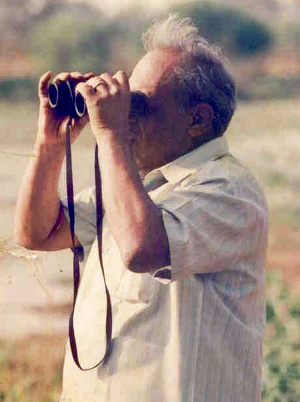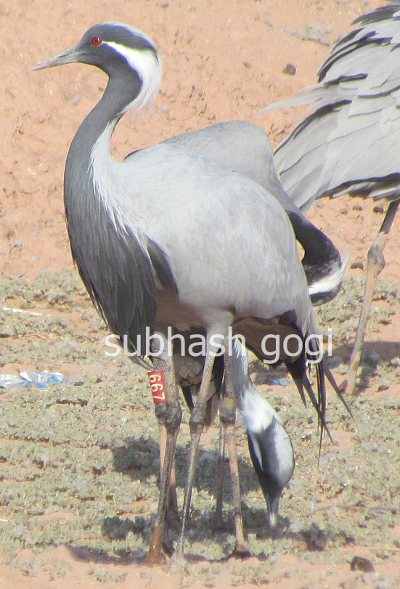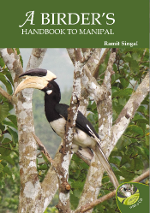Over the past year, we at MigrantWatch have had a series of discussions with the people who run the global bird listing platform eBird. The motivation for these discussions was this question:
How can we make it more enjoyable and easy to share bird sightings, and at the same time make the contributed information as valuable as possible for research and conservation?
 MigrantWatch has limitations in both of these respects. One of the main aspects of sharing bird sightings is having a user-friendly and feature-rich web platform. We haven’t done all that badly in this regard, and take the opportunity to thank Pavithra Sankaran (web design) and Anush Shetty (web development), and a list of many others, for all the volunteer effort put into making the MigrantWatch website and database. But at the same time, it is a huge task to maintain and further develop the site so that it best suits the needs of all of us birders.
MigrantWatch has limitations in both of these respects. One of the main aspects of sharing bird sightings is having a user-friendly and feature-rich web platform. We haven’t done all that badly in this regard, and take the opportunity to thank Pavithra Sankaran (web design) and Anush Shetty (web development), and a list of many others, for all the volunteer effort put into making the MigrantWatch website and database. But at the same time, it is a huge task to maintain and further develop the site so that it best suits the needs of all of us birders.
A second limitation is the kind of information that MigrantWatch asks for. We collect “presence-only” information, which means MigrantWatchers upload the date and location of sightings of migrants. This says when a species was seen, but, crucially, doesn’t say when a species was not seen. So, for example, it’s difficult or impossible to tell why there are no reports of Grey Wagtail from Indore in August 2013: is it because no-one was looking for them, or because they truly weren’t there? One solution to this problem is to collect complete birding lists of all species seen on a trip. This says: “X went birding at this location on this date and saw a number of species, but not Grey Wagtail”.
Also, in addition to regular queries about migrants, we get a lot of questions from participants related to non-migratory birds too. Clearly, migrants are not the only birds of interest!
For the above reasons, we are forging a closer relationship with eBird. The main reasons are that (a) eBird is a very easy-to-use and feature-rich site for maintaining your birding records, and (b) it focuses on encouraging birders to upload complete lists of the birds they saw during a particular trip. More details in the following points.
- It is a mature platform, used by tens of thousands of birders across the world to maintain their birding lists. It currently holds more than 150 million records of birds globally. This means it is a safe and reliable platform for our bird lists.
- It has many features to make it easier to upload your species lists, including species with uncertain identification. It also has features to explore your own lists, and you can download your lists into an excel file for use offline.
- Another nice feature of eBird is that your day’s list is available at a unique URL, which means that you can share and email your list with your friends as soon as it is entered into the system. An example of such a list is here: http://ebird.org/ebird/view/checklist?subID=S13041578
- You can also embed photos, videos or sound files to accompany each sighting: these are particularly useful as supporting information for the identification of difficult or unusual species.
- There are multiple ways to use eBird: through the website (www.ebird.org; this is the preferred way) or using a smartphone app.
- All information on eBird is available to explore through maps, charts and tables. The data on eBird is also ported up to the Avian Knowledge Network and the Global Biodiversity Information Facility, through which anyone can explore and download all the data.
Do try out eBird is you haven’t already, and let us know what you think.
From now on, we recommend the following:
- If you have a complete list from a birding trip: upload to eBird only
- If you have a partial list, with migrants and non-migrants: upload to eBird only
- If you want to report individual sightings of migrants, first or last of season, or general sightings: upload to MigrantWatch or eBird, not both
- For any individual sightings of Pied Cuckoo: upload to MigrantWatch or eBird, not both
We will integrate the information coming into both sources (eBird and MigrantWatch) into our monthly email round-up and in future reports. So even if you switch completely over to eBird, you will still be contributing to MigrantWatch!
What will happen to your existing sightings in MigrantWatch?
For the time being, these sightings are safe in the MigrantWatch database, which of course will continue to grow. At some point in the future we may consult you about whether you would like to import your sightings into eBird, which we can help you do. Either way, the main thing is to continue to go birding, note your bird sightings, and share them on a free and open platform!
We look forward to hearing your feedback on these changes.
 As part of our ongoing effort to move the entire MigrantWatch database to eBird, we will be asking you to undertake a few simple steps. Doing this will ensure that all your existing data are safely transferred to the eBird database, and are copied to your eBird account.
As part of our ongoing effort to move the entire MigrantWatch database to eBird, we will be asking you to undertake a few simple steps. Doing this will ensure that all your existing data are safely transferred to the eBird database, and are copied to your eBird account.




 Many MigrantWatchers participated in the first global Great Backyard Bird Count (GBBC) in Feb 2013. People across India watched birds for 15 min or more, wherever they were, and uploaded the lists to the
Many MigrantWatchers participated in the first global Great Backyard Bird Count (GBBC) in Feb 2013. People across India watched birds for 15 min or more, wherever they were, and uploaded the lists to the